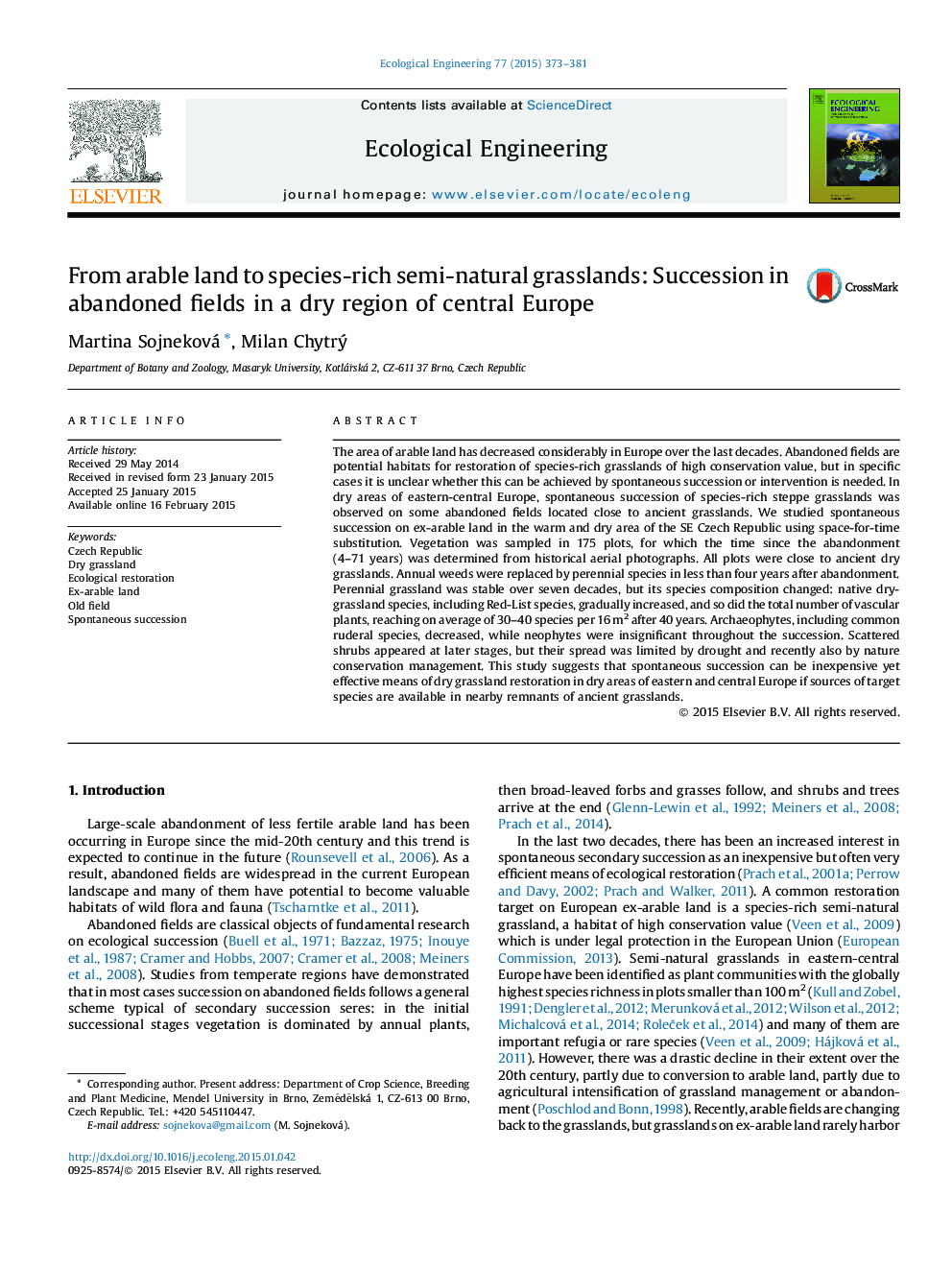| Article ID | Journal | Published Year | Pages | File Type |
|---|---|---|---|---|
| 4389282 | Ecological Engineering | 2015 | 9 Pages |
•Ex-arable land is suitable for restoration of continental dry grasslands.•We studied succession in abandoned fields in a dry area of central Europe.•Annual weeds were quickly replaced by perennial dry grassland species.•Dry grassland was stable over seven decades, but its species composition changed.•Species-rich grasslands on ex-arable land can be restored by spontaneous succession.
The area of arable land has decreased considerably in Europe over the last decades. Abandoned fields are potential habitats for restoration of species-rich grasslands of high conservation value, but in specific cases it is unclear whether this can be achieved by spontaneous succession or intervention is needed. In dry areas of eastern-central Europe, spontaneous succession of species-rich steppe grasslands was observed on some abandoned fields located close to ancient grasslands. We studied spontaneous succession on ex-arable land in the warm and dry area of the SE Czech Republic using space-for-time substitution. Vegetation was sampled in 175 plots, for which the time since the abandonment (4–71 years) was determined from historical aerial photographs. All plots were close to ancient dry grasslands. Annual weeds were replaced by perennial species in less than four years after abandonment. Perennial grassland was stable over seven decades, but its species composition changed: native dry-grassland species, including Red-List species, gradually increased, and so did the total number of vascular plants, reaching on average of 30–40 species per 16 m2 after 40 years. Archaeophytes, including common ruderal species, decreased, while neophytes were insignificant throughout the succession. Scattered shrubs appeared at later stages, but their spread was limited by drought and recently also by nature conservation management. This study suggests that spontaneous succession can be inexpensive yet effective means of dry grassland restoration in dry areas of eastern and central Europe if sources of target species are available in nearby remnants of ancient grasslands.
